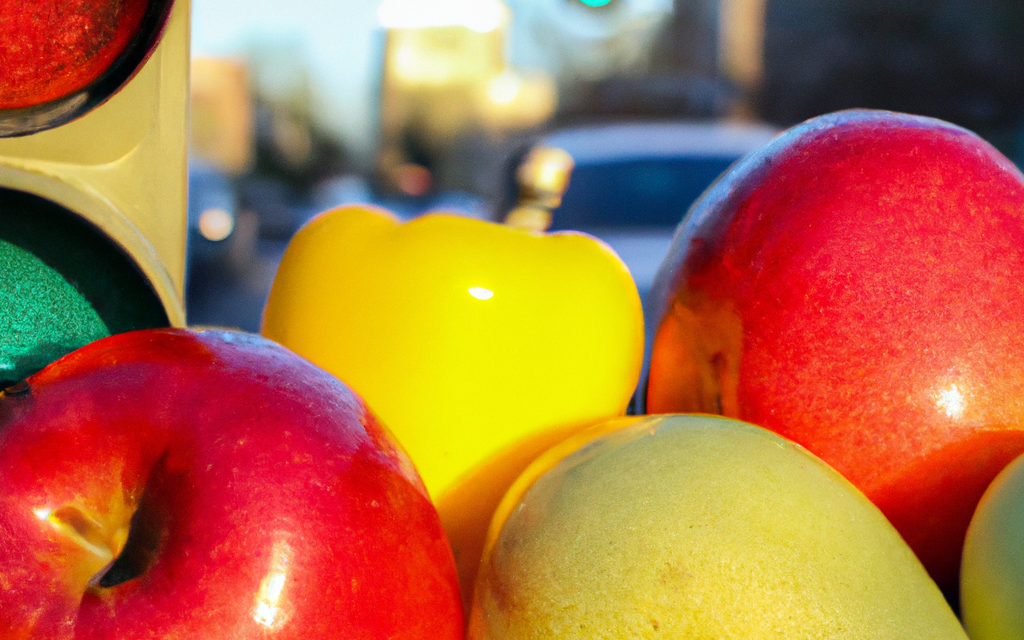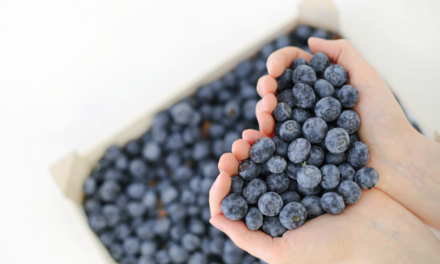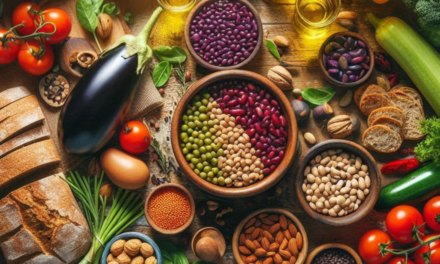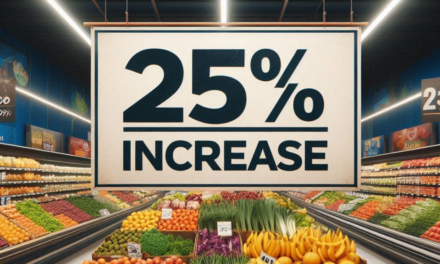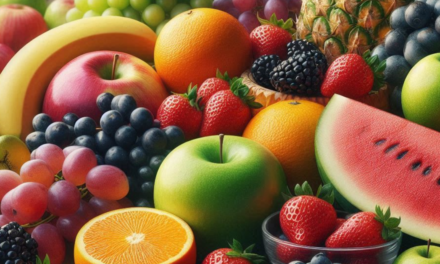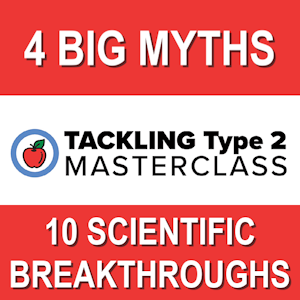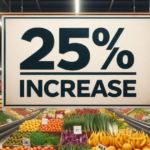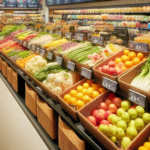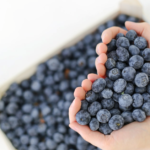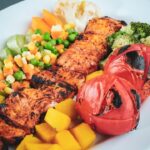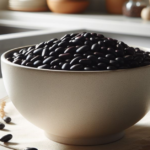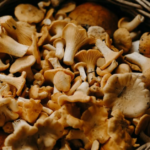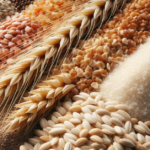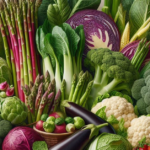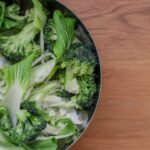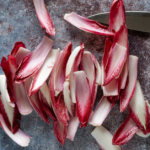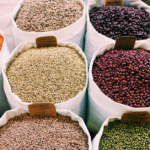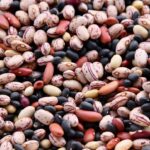Managing type 2 diabetes is no small feat. As someone who has lived with this disease for over two decades, I know firsthand the commitment it takes to keep blood sugar levels in check. Among other things, it requires a well-structured, effective approach to diet.
This is where the Traffic Light Diet could come in handy for making the daily food choices we must make. It provides a comprehensive, yet straightforward method to guide food choices for managing this chronic condition.
This diet plan simplifies the complex process of decision-making around food consumption, making it less daunting for individuals with type 2 diabetes to maintain a balanced diet.
Understanding the Traffic Light Diet
The first traffic light diet was developed in the 1970s by Dr. Leonard Epstein, chief of the division of behavioral medicine in the Department of Pediatrics at the University at Buffalo. As you might have guessed, in it ‘s original form it was not a guide for diabetic friendly food choices.
Inspired by the familiar red, yellow, and green colors of traffic lights, Dr. Epstein created a simple visual system to help overweight children understand which foods they should eat freely, limit, or avoid.
The “green” foods are low in calories and can be eaten without restriction. “Yellow” foods are moderate in calories and should be eaten in moderation. “Red” foods are high in calories and should be limited.
Since its inception, the traffic light diet has been widely used by pediatricians to encourage healthy eating habits in their young patients, often with parental involvement.
Though originally designed for children, the intuitive traffic light framework has proven effective for adults as well.
If you do an online search today you’ll find a number of references to different adaptations of Epstein’s original green, yellow and red approach to classifying foods. For example, the CDC has a page called “The Traffic Light Method – How to Prevent Type 2 Diabetes” with an interactive quiz about it.
Another quick example; the UK started a voluntary food labeling program in 2013. Fool labels were color coded red, amber and green to indicate at a glance if the food has high, medium or low amounts of fat, saturated fat, sugars and salt: red means high, amber means medium, green means low.
Applying the Traffic Light Diet to Diabetes: The Mastering Diabetes Way.
Cyrus Khambatta, PhD and Robby Barbaro are type 1 diabetics, experts in diabetes management and the authors of the book Mastering Diabetes and its related training programs. They advocate a low fat, plant-based diet rich in carbohydrates from whole foods, combined with intermittent fasting and daily physical activity.
It’s important to note two important distinctions about the Mastering Diabetes approach.
First, it encourages eating carbohydrate rich whole fruits. This approach runs counter to the traditional approach that says fruit is high is sugar and should be avoided. Khambatta and Barbaro claim fruits are a vital part of any healthy diabetes diet aimed at reversing type 2 diabetes, because they help fight insulin resistance.
Second, based on the premise that insulin resistance is caused by the accumulation of fat in tissues that are not designed to store large quantities of fat, total dietary fat intake should be limited to no more than 15% of total calories. Accomplishing that involves replacing foods that are rich in trans-fat and saturated fat with carbohydrate rich whole foods that are low in those fats.
At the core of their version of the Traffic Light Diet the simple, color-coded system is used to categorize foods based on their nutrient density and calorie content. This makes the diet easy to understand and follow. It too categorizes foods into the three familiar colors found in traffic lights; green, yellow and red.
Green light foods, packed with essential nutrients and being low in calorie density, promote optimal diabetes health.
Yellow light foods, when consumed in moderate quantities, help prevent weight gain, a significant risk factor for diabetes complications.
Avoiding red light foods, in turn, contributes to better diabetes management and Khambatta and Barbaro strongly recommend against them.
Green Light Foods to Focus On
Green light foods are the superstars of a healthy diet for people managing type 2 diabetes. They are nutritious, low-calorie foods that you can eat freely.
They’re considered optimal for managing blood sugar and promoting overall health.
Here are the main categories of green light foods with example foods: (See the complete list at the bottom of this article.)
1. Non-starchy vegetables: These are low in carbohydrates and rich in fiber and vitamins, making them ideal for managing blood sugar spikes. Examples include:
- Leafy greens like spinach, kale, and lettuce
- Cruciferous vegetables like broccoli, cauliflower, and brussels sprouts
- Bell peppers, cucumbers, celery, and zucchini
- Mushrooms of all kinds
2. Fruits: Choose whole fruits over juices or fruit-based snacks. Opt for varieties lower on the glycemic index, like:
- Berries (blueberries, strawberries, raspberries)
- Citrus fruits (grapefruits, oranges, tangerines)
- Apples, pears, and peaches
- Melons (watermelon, cantaloupe)
3. Legumes: Packed with protein and fiber, legumes help stabilize blood sugar and provide essential nutrients. Choose from:
- Beans (black beans, kidney beans, pinto beans)
- Lentils
- Peas
4. Starchy vegetables: While not unlimited like non-starchy options, moderate portions of these complex carbohydrates can be included:
- Sweet potatoes
- Potatoes
- Corn
- Winter squash
5. Intact whole grains: Choose whole grains over refined to support healthy blood sugar levels. Consider:
- Brown rice
- Quinoa
- Barley
- Oats
6. Other green light inclusions:
- Herbs and spices: Add flavor without calories or impacting blood sugar.
- Unsweetened beverages like water, tea, and black coffee.
Remember, portion control is still important even with green light foods. Consult a registered dietitian or healthcare professional for personalized guidance and a detailed meal plan suited to your specific needs and diabetes management goals.
Yellow Light Foods to Eat in Moderation
Yellow light foods in the traffic light diet for diabetics are those that you can enjoy in moderation. The food in this group has been minimally processed or is higher in fat content.
They’re considered healthy choices but can impact blood sugar if consumed in large quantities or frequently. Here’s a list of common yellow light foods.
- Avocados: Rich in monounsaturated fats and fiber.
- Nuts and seeds: Provide healthy fats, protein, and fiber, but can be high in calories.
- Nut and seed butters: Choose natural varieties without added sugars or oils.
- Olives: Good source of monounsaturated fats and antioxidants.
- Plant-based milks: Unsweetened varieties can be a good source of calcium and vitamin D, but watch out for added sugars in some brands.
- Coconut meat: High in antioxidants that fight free radicals.
- Dried fruits: High in sugar and calories, enjoy them in small portions.
- Fermented foods like sauerkraut and kimchi: Excellent for gut health, but monitor sodium content.
- Soy products like tofu and tempeh: Good source of protein, but be mindful of processed varieties with added sodium or sugars.
Remember, even with yellow light foods, moderation is key. Pay attention to portion sizes, read food labels carefully, and prioritize fresh, whole foods whenever possible.
Red Light Foods to Avoid
In this diet, red light foods are those to avoid or severely limit in your diet. They can negatively impact blood sugar levels and contribute to the progression of diabetes. Here are the main categories of red light foods:
1. Processed and ultra-processed foods: These are often high in sugar, refined carbohydrates, unhealthy fats, and sodium, all of which can spike blood sugar and promote chronic health issues. Examples include:
- Fast food and takeout
- Deep-fried snacks and chips
- Sugary drinks (sodas, juice drinks, sweetened coffee)
- Processed meats (hot dogs, sausages, deli meats)
- Packaged cookies, cakes, pastries, and candy
- Frozen meals and ready-to-eat dinners
- Salad dressings and condiments high in sugar or unhealthy fats
2. Refined grains: Unlike whole grains in the green category, refined grains are stripped of their fiber and nutrients, causing rapid blood sugar spikes. Avoid:
- White bread, pasta, and rice
- White flour-based baked goods like muffins and pancakes
- Crackers and pretzels
3. Sugary foods: Any food high in added sugar can significantly elevate blood sugar levels. Minimize:
- Candy, chocolate, and desserts
- Sweetened yogurt and cereal
- Sugar-laden coffee drinks
- Honey, maple syrup, and jams
4. Other red light items:
- Oils and fats: While healthy fats have their place, avoid oils high in saturated and trans fats.
- Dairy products: Some diets include full-fat dairy in yellow or red due to potential for blood sugar spikes in sensitive individuals. Consult a healthcare professional for individual guidance.
- Sweeteners: Artificial sweeteners have limited research on their long-term effects, so it’s best to avoid them or use them sparingly.
Applying the Traffic Light Diet in Daily Life
Incorporating the Traffic Light Diet into daily life requires a lot more planning and prepping than what most of are accustomed to doing in our fast food society. You can start by planning your meals around predominantly green light foods, with yellow foods to add variety and balance, and red foods reserved for occasional indulgence.
If you aren’t already doing a fair amount of meal planning it might be a good idea to start with small changes and build up you meal plans over time.
Gradually reduce the consumption of yellow and red light foods, while increasing your intake of green light foods. Remember, red light foods, while not the healthiest choices, can occasionally be enjoyed for meal satisfaction and to prevent feelings of deprivation.
If you find this approach appealing and you’re looking for some help getting started, you can find several free recipies on the Mastering Diabetes website. They also offer a paid program that sends weekly recipes for a yearly subscription.
Challenges and Solutions With the Traffic Light Diet
Implementing the Traffic Light Diet can come with challenges, particularly for people with type 2 diabetes and very busy schedules.
A while back I decided to adopt a green light focused eating plan. I found some especially helpful recipes and meal plans and gave it a whirl. While filling my plate with green light foods is ideal, I’ve learned it does come with some challenges. In the beginning, prepping food was the 800 pound gorilla. Prepping fresh produce takes more time and planning than cooking processed foods.
I had to set aside a couple hours a week to wash, chop, and store veggie snacks to have on hand. One Sunday I ended up spending most of the day prepping two days worth of meals. It took so long, in part because I was a newbee and wasted a lot time figuring out what to do next. Afterwards, I learned that I could have saved a lot of time by using some packaged foods.
And I had to adjust the grocery budget to accommodate the increased costs of buying fresh fruits and veggies. Another surprise to me turned out to be how many more trips to the grocery store were needed. I’m used to buying in bulk at a big box store. That doesn’t always work so well with fresh foods that can go bad if they are stored too long.
But I am convinced the health payoff makes the extra prep and financial costs well worth it. With a little planning and problem-solving, the traffic green light diet is doable, and the benefits for my diabetes management make it more than worthwhile.
Finally, it’s important to consider consulting a healthcare professional or registered dietitian for personalized recommendations on managing your diabetes through diet. They can help you create a meal plan that includes appropriate portions and substitutions for red light foods, taking into account your individual needs and preferences.
Addendum: Green Light Foods
Leafy Greens
Dandelion, Seaweed, Parsley, Collards, Lambsquarters, Leeks, Chives, Kale, Mustard Greens, Arugula, Spinach, Beet Greens, Turnip Greens, Fennel, Green Onions, Swiss Chard, Watercress, Chard, Pokeberry, Purslane, Endive, Romaine Lettuce, Red Leaf Lettuce, Green Leaf Lettuce, Iceberg Lettuce, Butterhead Lettuce
Non Starchy Vegetables
Mountain Yam, Artichokes, Beets, Onions, Shallots, Broccoli, Eggplant, Brussel Sprouts, Tomatillos, Rutabagas, Kohlrabi, Chayote, Cabbage, Bok Choy, Cauliflower, Radicchio, Okra, Turnips, Rhubarb, Asparagus, Tomatoes, Summer Squash, Celery, Radishes, Cucumber, Zucchini, Nopales
Beans, Peas and Lentils
Chickpeas, Pink Beans, Pinto Beans, White Beans, Navy Beans, Cranberry Beans, Black Beans, French Beans, Adzuki Beans, Kidney Beans, Fava Beans, Pigeon Peas, Great Northern Beans, Split Peas, Moth Beans, Lentils, Lima Beans, Broad Beans, Mung Beans, Green Peas, Yardlong Beans, Yellow Beans, Green Beans
Starchy Vegetables
Taro, Yams, Corn,
White Potatoes, Sweet Potato, Cassava (Yuca), Red Potatoes, Parsnips, Acorn Squash, Hubbard Squash, Carrots, Butternut Squash, Spaghetti Squash, Pumpkin
Intact Whole Grains
Wheat, Spelt, Barley (hulled only, no pearl), Brown rice, Millet, Rye, Sorghum, Quinoa, Amaranth, Wild Rice, Teff, Buckwheat, Bulgur
Fruits
Mamey Sapote, Plantains, Persimmons, Breadfruit, Custard Apple, Passionfruit, Jackfruit, Sugar Apple, Bananas, Pomegranate, Sapodilla, Jujube, Crabapples, Cherimoya, Figs, Elderberries, Kumquats, Grapes, Guavas, Lychees, Soursop, Cherries, Currants, Oranges, Kiwi, Longans, Mangos, Pears, Blueberries, Quinces, Apples, Currants, Tangerines, Raspberries, Pineapple, Apricots, Loquats, Clementines, Cranberries, Plums, Gooseberries, Nectarines, Horned Melon, Blackberries, Mulberries, Papayas, Grapefruit, Asian Pears, Prickly Pears, Peaches, Pomelo, Honeydew Melons, Cantaloupe, Strawberries, Starfruit, Watermelons
###
Remember, proactive self-care matters. Every step we take, every decision we make to better manage our diabetes makes a difference in how well and how long we live. Choose wisely. Live long, love life and be well.
The information on this site is not intended or implied to be a substitute for professional medical advice, diagnosis or treatment. The information on this site is for informational purposes only and is not intended to diagnose, treat, or cure any type of disease or condition. Diabetes Control Today does not guarantee any results for your specific situation. In support of our website, we may share resources offered by trusted partners. If you purchase products from any of these partners, the owners of this site may receive a portion of the proceeds. These affiliations allow us to continue bringing you valuable, potentially life-changing content.

